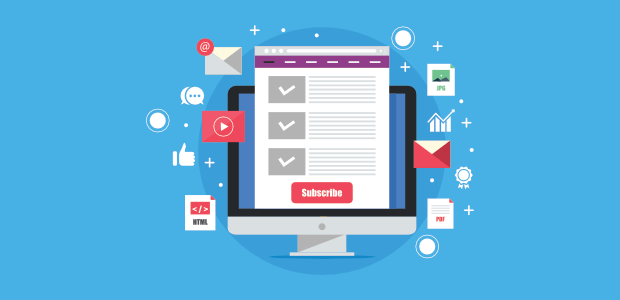How to Create an Email List for E-commerce (Beginner’s Guide for 2025)

If you’re running an online store, there’s one digital asset more powerful than social media followers, influencer shoutouts, or paid ads — your email list.
In fact, email marketing delivers an average ROI of $36 for every $1 spent (source). That’s not hype — it’s hard data. The catch? You can’t start sending money-making emails if you don’t have anyone to send them to.
This guide walks you through how to build an email list for your e-commerce store, even if you’re starting from scratch, with zero contacts and no budget.
🚀 Why Building an Email List Early Matters
Your email list is a direct communication channel with potential customers — no algorithms, no gatekeepers. Here’s why it’s gold for e-commerce:
- You own your list (unlike social media platforms)
- Emails can be automated for passive revenue
- You can personalize offers and segment by behavior
- It nurtures trust and increases repeat sales
In short, an email list gives your online store stability and scale. Let’s explore how to build one from scratch.
✅ Step 1: Choose the Right Email Marketing Platform
First things first, you need an email service provider (ESP) to manage your subscribers and campaigns.
Top Beginner-Friendly Platforms:
- Mailchimp – Great for small e-commerce businesses. Free for up to 500 contacts. Offers automation, analytics, templates, and CRM features.
- Brevo (formerly Sendinblue) – Known for its SMS + email integration, powerful automations, and no-contact limits on free plans.
- ConvertKit – Excellent for digital product sellers and creators. Focuses on clean UI, tagging, and segmentation.
What to Look For:
- Easy-to-use email builders
- E-commerce integration (with Shopify, WooCommerce, etc.)
- Automation capabilities
- Segmentation and personalization tools
- Analytics and reporting
🛠 Pro Tip: If you’re running a Shopify store, consider the built-in Shopify Email app — simple, affordable, and fully integrated.
🎁 Step 2: Offer an Irresistible Lead Magnet
People guard their email addresses — they won’t hand them over unless you offer something worthwhile in return.
What’s a Lead Magnet?
A lead magnet is a free item or incentive you offer visitors in exchange for their email address.
Great Lead Magnet Ideas for Online Stores:
- 🔥 10%–15% off first purchase
- 📚 Free digital guide or eBook (e.g., skincare routines, home decor tips)
- 🎉 Enter-to-win giveaway
- 🛍 Early access to new collections
- 💬 Exclusive membership access to deals or content
🧠 Design Tip: Use Canva to create sleek, branded coupons or PDF downloads that feel professional and visually appealing.
🧩 Step 3: Add Email Opt-in Forms to Your Store
You’ve got a platform. You’ve created a lead magnet. Now, you need to collect emails with opt-in forms on your site.
Best Places to Add Opt-in Forms:
- Homepage hero section
- Exit-intent pop-ups
- Footer across all pages
- Product pages
- Checkout pages (e.g., “Get a surprise gift if you subscribe”)
- Blog articles and sidebars
📦 Use tools like:
- OptinMonster – Powerful form builder with targeting features
- Sumo – Free and easy to integrate with Shopify/WooCommerce
- Poptin – Affordable popup and form builder with templates
⛔ Avoid These Mistakes:
- Interrupting users with aggressive pop-ups too soon
- Making forms hard to close
- Not optimizing for mobile users
💌 Step 4: Set Up Your First Email Sequence
Once someone joins your list, what happens next is crucial.
Create an Automated Welcome Sequence
A good welcome sequence builds trust and guides new subscribers toward their first (or next) purchase.
Sample 4-Email Flow:
- Welcome Email – Thank them and deliver the promised lead magnet. Share your brand mission.
- Story Email – Talk about why you started your store or how your products are made.
- Product Education Email – Highlight bestsellers, how-to-use guides, or customer reviews.
- Special Offer Email – Offer a time-limited discount to convert them into a buyer.
📧 Platforms like Klaviyo (great for Shopify/WooCommerce) offer robust automation builders for sequences like these.
📢 Step 5: Drive Traffic to Your Opt-in Forms
Now that your setup is complete, it’s time to get people onto your email list.
Free Ways to Promote Your Opt-in:
- Add to your Instagram bio via Linktree or Beacons
- Share the lead magnet in Instagram Stories or Pinterest pins
- Create a blog post around a related topic and embed the opt-in form
- Run a giveaway with a subscription requirement
Paid Options:
- Use Facebook/Instagram Ads to drive traffic to a lead magnet landing page
- Collaborate with micro-influencers for newsletter shoutouts
- Test Google Display Ads for broader reach
🎯 Pro Tip: Use Bitly to track how many people are clicking on your opt-in links from different platforms.
💬 Step 6: Nurture and Engage Your Subscribers
Don’t ghost your list. Keep them warm with regular, valuable emails that build loyalty and increase lifetime value.
Email Ideas That Work:
- New arrivals and limited editions
- Behind-the-scenes content (e.g., how your product is made)
- Customer stories and UGC features
- Product education and care tips
- Flash sales and early access deals
🧠 Avoid spammy tactics like all-caps subject lines or misleading headlines. Tools like CoSchedule’s Headline Analyzer can help improve email open rates.
📅 Best Practices:
- Send at least 1–2 emails per week
- Use first names to personalize content
- Clean inactive subscribers every 3–6 months
🎯 Final Thoughts: Build Early, Nurture Often
Your email list is one of the most valuable assets in your e-commerce business. Unlike algorithms or ad platforms, it’s yours to control — and it will serve you for years if managed well.
So start simple:
- Choose a beginner-friendly platform
- Create an irresistible offer
- Set up basic forms and automations
- Share your opt-in everywhere
- Send emails with personality and purpose
Whether you’re launching your first product or scaling to your next 100 orders, your email list is your silent salesperson — always working behind the scenes.



